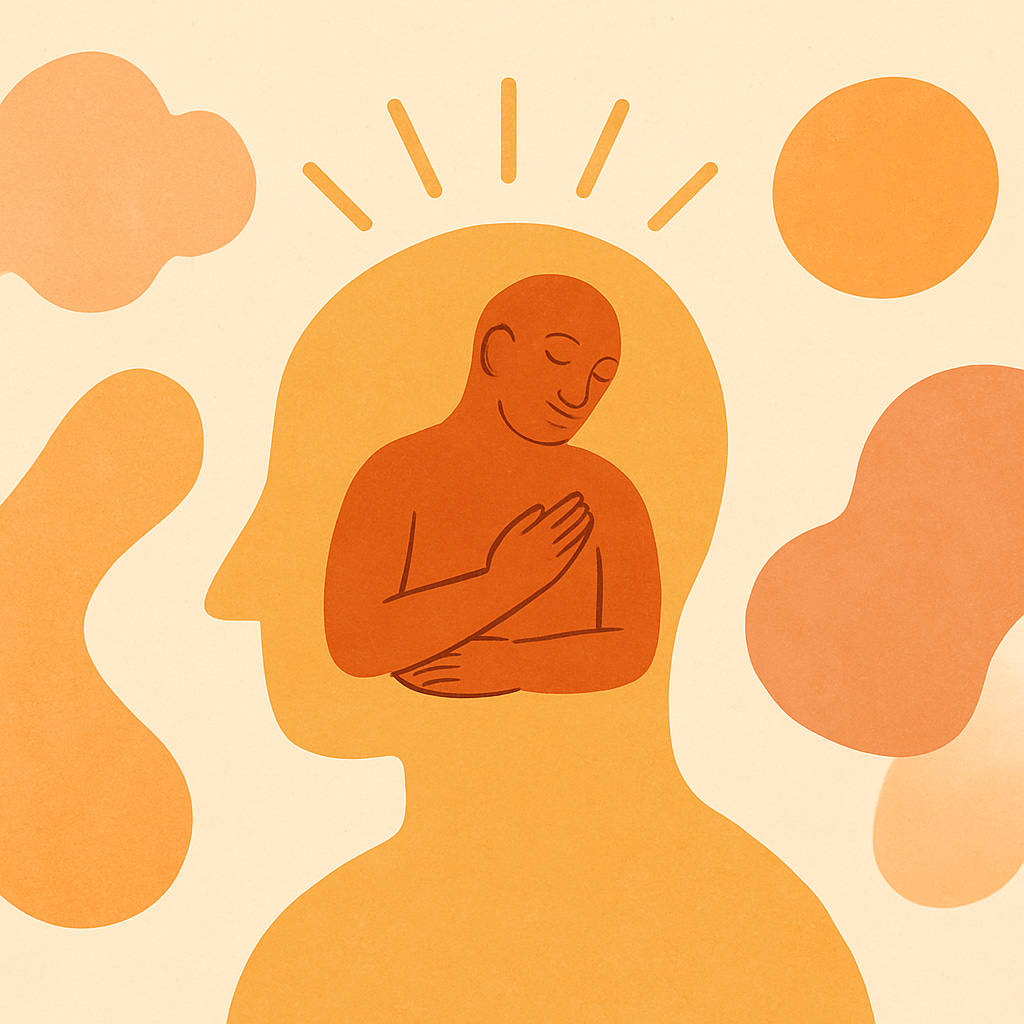The Inner Critic’s Origin Story, Part III: A Kinder Way Forward
Why that inner judgemental voice is trying to protect you, and how to respond with curiosity instead of fear.
In Part I, we explored how shame evolved to protect us. In Part II, how childhood shaped the critic’s voice.
Now, in Part III, we ask: how does it show up in adulthood, and what can we do about it?
Most of us try to silence the inner critic. But what if we didn’t try to fight it? What if we tried to understand it?
Speaking in groups has always been hard for me.
Sometimes it was a work meeting with an awkward moment. Or a presentation where I fumbled an answer. I’d replay the event over and over like a bad highlight reel—obsessing about what I said and how I came across.
Sometimes I lost sleep. I’d walk around in a bad mood, snapping at my family. Sometimes it even affected my focus at work. I cringe a little now at how much energy I spent navigating those states.
But beneath that emotional spiral was a physical reality. My nervous system had gone into threat mode. To my brain, it wasn’t just a meeting or a question. It was a moment of potential rejection.
The inner critic stepped in afterwards to protect me by trying to make sure it wouldn’t happen again. Its number one goal is to preserve my sense of belonging. My safety.
The Inner Critic Is Trying to Help
No one wakes up hoping to be mean to themselves. But the inner critic doesn’t see it as cruelty. It sees self-judgement as useful.
It says things like: “That was embarrassing. Don’t do that again.” “You need to fix this before anyone notices.” “Why can’t you get it right?”
It’s harsh. But beneath the harshness is fear. Fear of rejection. Of failure. Of not being good enough.
The critic's job is to protect you from pain. But it tends to use the wrong tools. It reaches for a sledgehammer when a paintbrush would do.
Its logic is simple: If I judge myself first, no one else can hurt me worse.
A Different Approach: Relating to the Critic with Compassion
The critic’s job is exhausting.
If it believed you could be safe without its vigilance, it would gladly lay down its torch and rest.
Helping it get to a place of rest is long-term work that starts with knowing the critic intimately and offering it compassion.
But in the short term, you can start learning to change how you relate to it. The goal isn’t to silence the critic or exile it—it’s to stop letting it run the show.
Here are a few ways to start:
1. Practice noticing when the critic shows up. Pay gentle attention to the moment it arises. What is it saying? What emotions are present? Where do you feel it in your body? Sometimes, the act of naming it starts to shift the relationship.
2. Allow the experience without pushing or clinging.
Instead of arguing with the critic or surrendering to it, try letting it be there without resistance.
Breathe. Notice the urge to fix or flee, and gently stay with the feeling. Let it come and go like a wave.
(Mindfulness practice can help us observe inner experience with kindness and without attachment.)
3. Respond like you would to a friend in distress. If someone you loved were feeling this way, what would you say? What tone would you use? What gesture would you offer?
Now, try offering the same care to yourself. You don’t need to fully believe it yet. Just practice turning toward yourself with kindness in this difficult moment. See what happens inside.
Compassion Doesn’t Mean Agreement
To be clear, compassion isn’t the same as agreement. It’s not saying, “You’re right. I’m terrible.”
It’s saying: “I see you’re scared right now. It’s okay to feel this. But I’m no longer going to punish myself to feel safe. I’m going to meet you with kindness.”
When we meet shame with curiosity, and fear with care—even for just a moment—we start unlearning the belief that harshness is the only growth path.
Self-compassion isn’t weakness. It’s nervous system regulation. It’s healing. It’s leadership.
Final Thoughts
The inner critic won’t vanish overnight. It’s been with you a long time. It knows its role well.
But every time you meet it with understanding instead of attack, you change the script.
And over time, the critic can stop shouting so loudly. Eventually, it becomes a whisper.
Because when safety is no longer tied to self-rejection, that part of you finally gets to rest.



